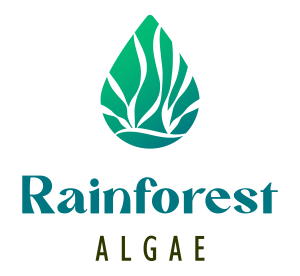OCTOBER 17 2023
Media Update

Stan Pankratz
Founder / President
Stan Pankratz graduated from a PhD program in late 2019 during which his analytical research project compared open pond algae cultivation systems with environmentally enclosed photobioreactor (PBR) technologies. The objective was to analytically demonstrate the potential for algae to sequester CO2
with the resulting algae biomass to be utilized as a feedstock for the production of hydrogen and diluent for use in oilsands operations. The resulting Algae-based Biomass for Production of Fuels and Chemicals report to Emissions Reduction Alberta (ERA) may be found here
Upon graduation research pivoted into an applied algae cultivation project. The challenge was to determine whether what had been predicted through modelled systems could be achieved empirically. Where the PhD theoretical model looked at thermochemical conversion of the low value ($0.50-$1.00/L)
biomass to low carbon fuels, the current research focuses on production of protein where the biomass value is above $20/kg, in a $40 billion growing global market with prices ranging from $10-$150/kg and where conventional agriculture is struggling to meet demand. Cost of algae production remains the single largest challenge for the algae industry to go mainstream. Because of this barrier, the company has conducted research to increase algae productivity and reduce cost. Given that Canada has a relatively cool climate, open pond systems long seen as the most costeffective means for producing algae, we would be at a significant economic disadvantage over similar systems found in semi-arid climates where temperatures and solar energy are much more abundant.
Therefore, research has focused on developing a more advanced PBR (photobioreactor) algae cultivation platform that can cost effectively achieve higher cell densities and yields. Research and development activities to date have resulted in an algae cultivation platform that can achieve algae cell densities up to 15g/L with focus on cultivation of spirulina, an approved food source and with an extraordinary 50-60% protein composition. 100% of the algae is edible and the plant can double its mass in 24-48 hours. The key nutrient for cultivating the algae is CO2 where for every kg of algae produced the plant uses 1.8 kg of CO2. Thus, through direct air capture (DAC) and use of exhaust gas from a natural gas combined heat power (CHP) electric generator, algae offer a great GHG mitigation story. Two patent applications related to the developed technology are currently under review.
Over the past year, partnering with an Alberta energy giant and the Government IRAP and Mitacs programs, research activities have investigated the potential of cultivating algae for GHG mitigation. Highlights from this work include achieving continuous production of 2.2 g/L/d algae in SAGD process
water, improving water quality anticipating that it will be able to be reused in oilsands operations. Current electrical energy required to produce the algae produces 300 g CO2e emissions at a cost of $50/kg biomass. Scaling to 1m3 PBRs is forecast to drop the emission factor to 212 g CO2e emissions and
$36/kg cost for biomass. Further emission and cost reductions are foreseen as we scale to a modular 28m3 PBR and by covering all energy associated by operations from renewal sources. This could drop production costs to sub $1000/T biomass or below $600/T net CO2 captured and thus enable it to
compete with other DAC technology solutions. Furthermore, because of the inherent value of the biomass, this solution is able to achieve economic sustainability.
More recent research activities have focused on quantifying the impact of improving the gas mass transfer of CO2 from the gas phase into the aqueous algae growth media and expelling O2 from within the media into the head space of the algae cultivation reactor to improve algae productivity. This has
involved the combination of both the generation / utilization of nanobubbles and the ability of the algae cultivation reactor to affect an efficient exchange of these key gases. Beyond this, the company has officially launched a commercial research scale 10L PBR algae cultivation reactor for commercial sale, achieved through the financial support of IRAP.
For more information contact:
Stan Pankratz, PhD c. 403-616-0555 e. stan.pankratz@rainforestalgae.ca

